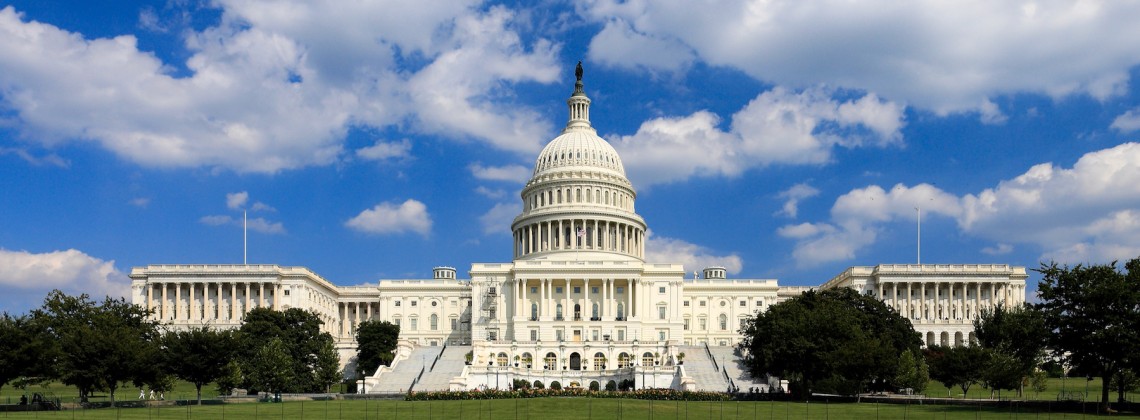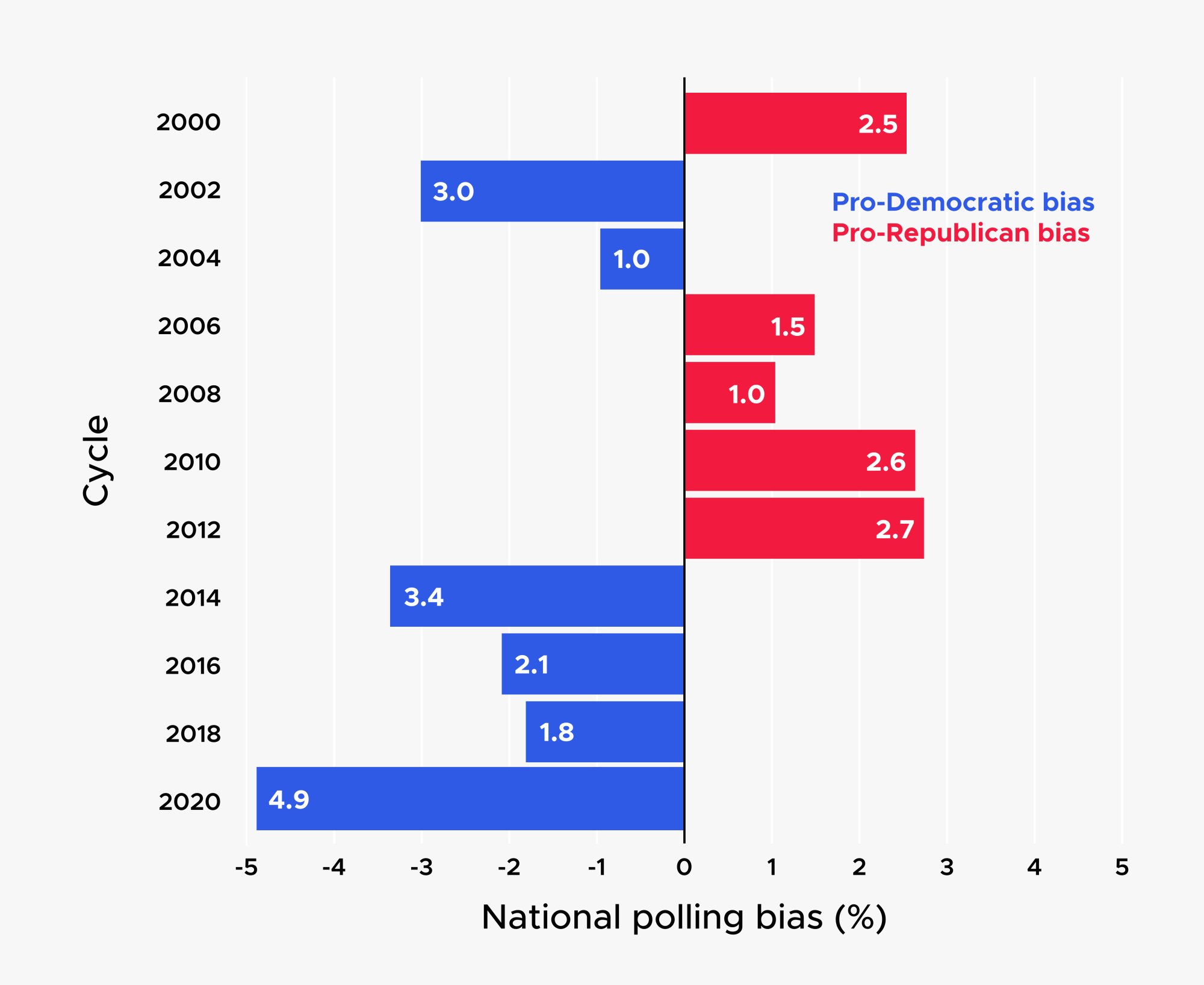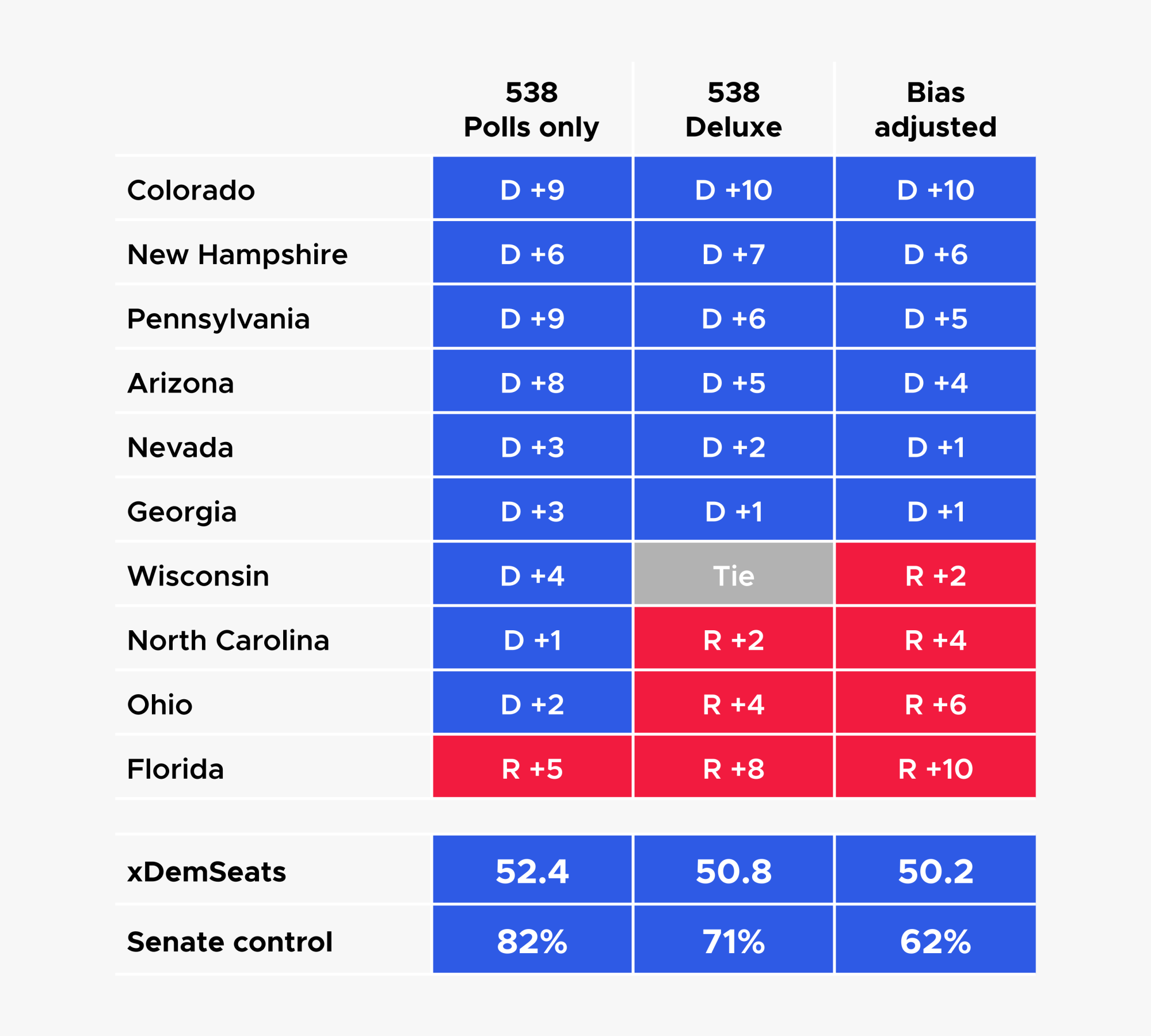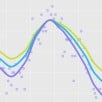
The Senate race may be closer than the polls suggest
Patrick Flynn
15 September 2022
The last four electoral cycles for the US Senate and presidency have all shown national polling biases in favour of the Democrats, underestimating Republican support to varying degrees.

No adjustments have been made to account for this in FiveThirtyEight or The Economist’s Senate forecast because, while it may look like a pattern, there is no statistically significant relationship between national polling bias from one electoral cycle to the next.
However, looking back over the last 20 years, I have found that there appears to be a statistically significant relationship concerning polling bias across electoral cycles at the state level.
On average, 30% of the polling bias from the previous cycle is carried over to the next in each state. For example, if the polls showed a 10-point bias in favour of the Democrats in a race in 2020, you would expect polls in that state to be biased by 3 points in the same direction in 2022.

R output
This phenomenon is just as true for marginal states as it is for safe Republican or Democratic areas where there is less frequent polling. Take Ohio, for example. FiveThirtyEight rated it a toss-up in 2020 with less than a percentage point separating Joe Biden and Donald Trump in their forecast. In both 2016 and 2018, polls in Ohio showed a 6-point skew towards the Democrats; accounting for this would have seen the race turn from a toss-up into a ‘lean Republican’ one. In the end, Trump carried Ohio by 8 points, meaning the polls were just as biased towards the Democrats in 2020 as they were in the previous two cycles.
For those interested in the methodology, I’ve looked at FiveThirtyEight’s ‘Deluxe’ forecast in each Senate race on election day going back to 2014 and used the website’s polling archive to generate an average for each race in the years prior to 2014. For cycles where there was no Senate election, I have used the state presidential error (where available) as a substitute.
What about 2022?
Looking ahead to November, the Democratic advantage in the Senate looks less secure than the polls suggest. Some other analysts have picked up on this – Nate Cohn of The New York Times did some research on a similar theme this week, showing that the Democrats were outperforming their ‘fundamentals’ in states where polls overestimated Joe Biden in 2020.
Some of this overperformance can be attributed to candidate selections (the Republican Party’s decision to select Mehmet Oz as their Pennsylvania candidate goes some way in explaining why the Democrats are doing well there). However, the pattern that emerges when plotting polls across multiple Senate races gives credence to the idea that the bias will continue in November.
Applying the past bias adjustment, the ten closest Senate races move by an average of 1.1 points in the Republican direction, with the largest swings in Wisconsin (tied in FiveThirtyEight’s Deluxe model; Republican +2 with adjustment), North Carolina (Republican +2 to +4), Ohio (R +4 to +6) and Florida (R +8 to +10).

If we also use the standard deviations from FiveThirtyEight’s model, the number of expected Democratic seats falls from 50.8 to 50.2 and their chance of controlling the Senate drops from 71% to 62%. Interestingly, this is the same chance the market gives the Democrats of holding the Senate.
I cashed out my position on Democratic control at favourable odds recently, but right now the market appears to be in the right place. The individual races are also broadly in line with expectations, though there is still some value in backing the Democrats to win Pennsylvania at 1.42.
Patrick Flynn
15 September 2022


